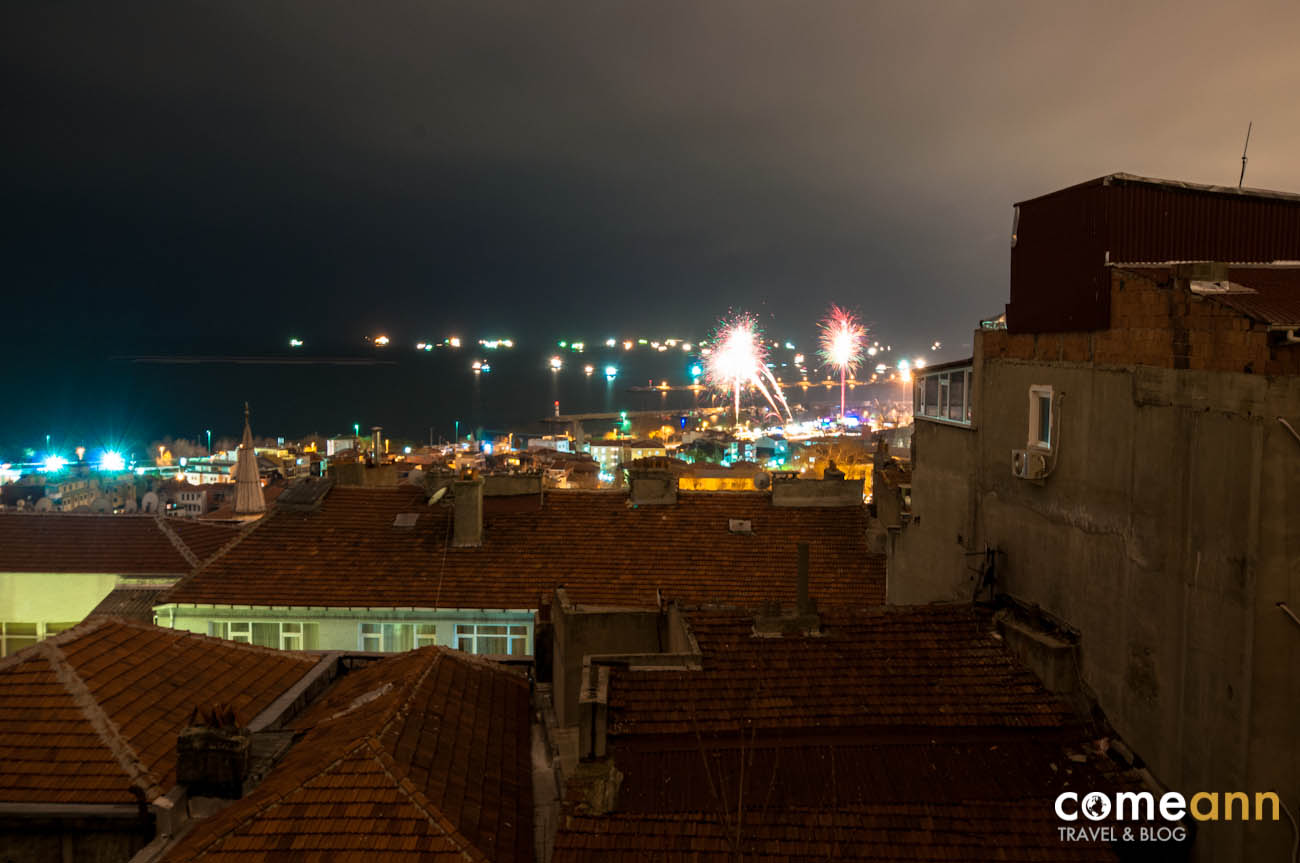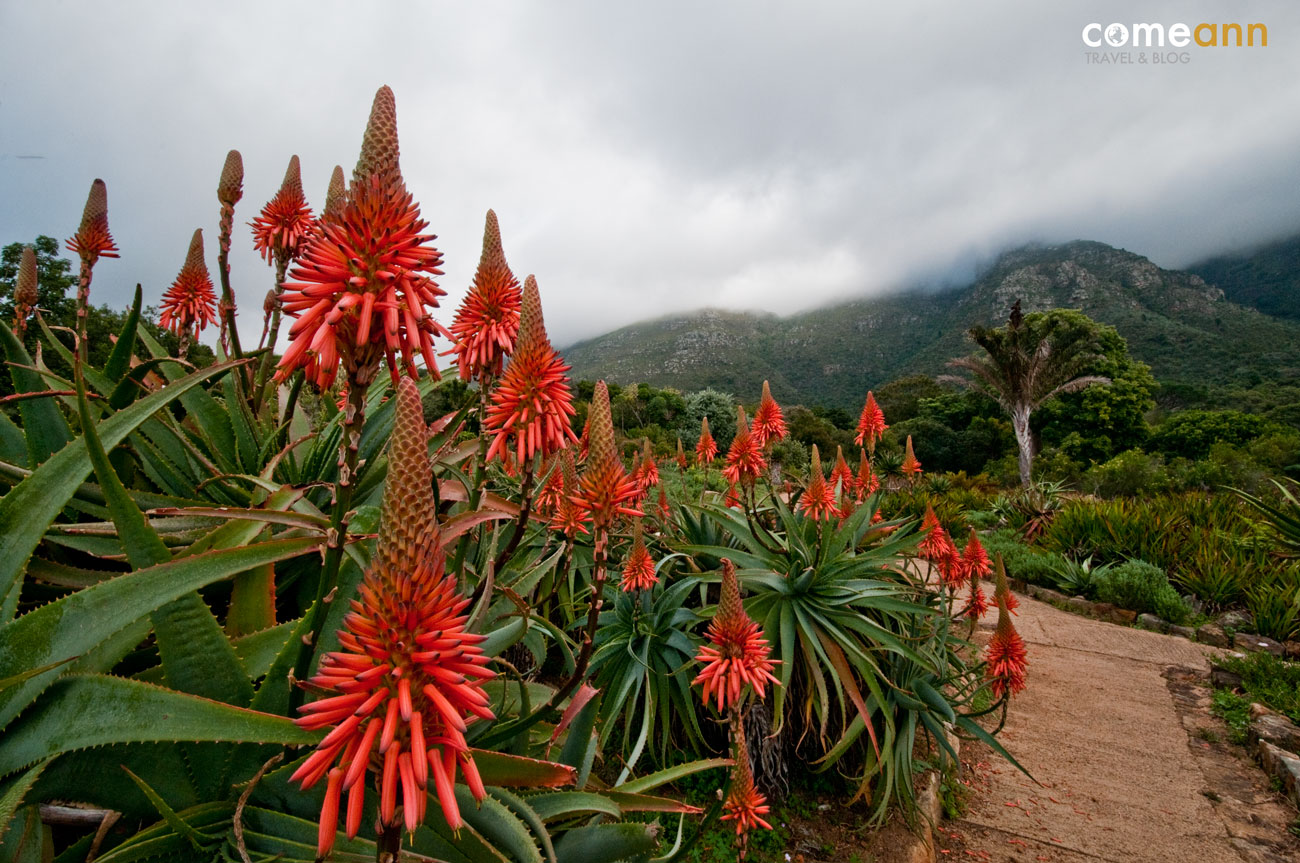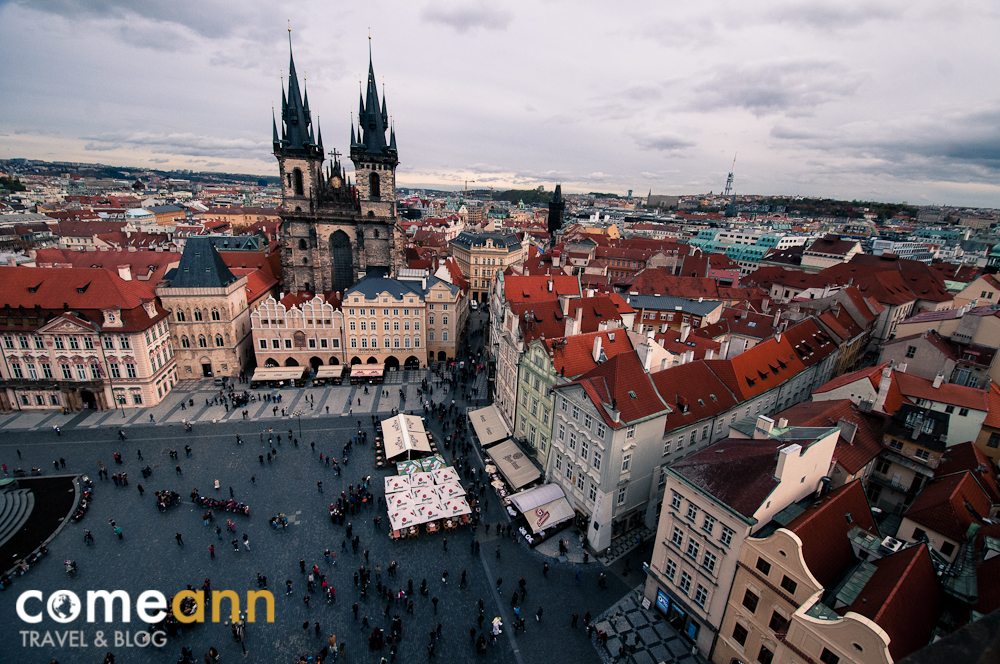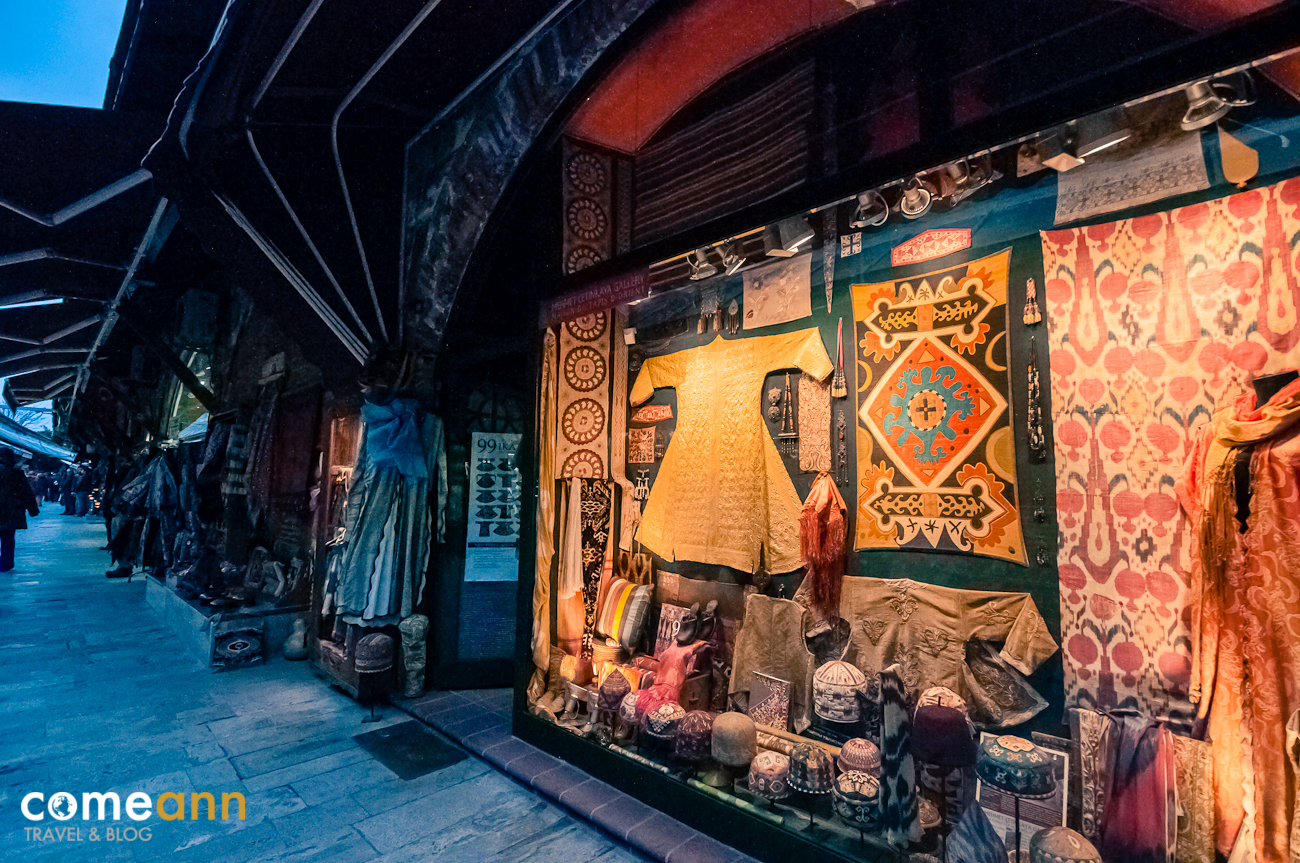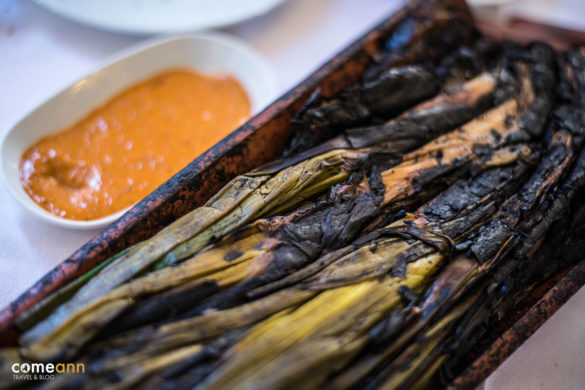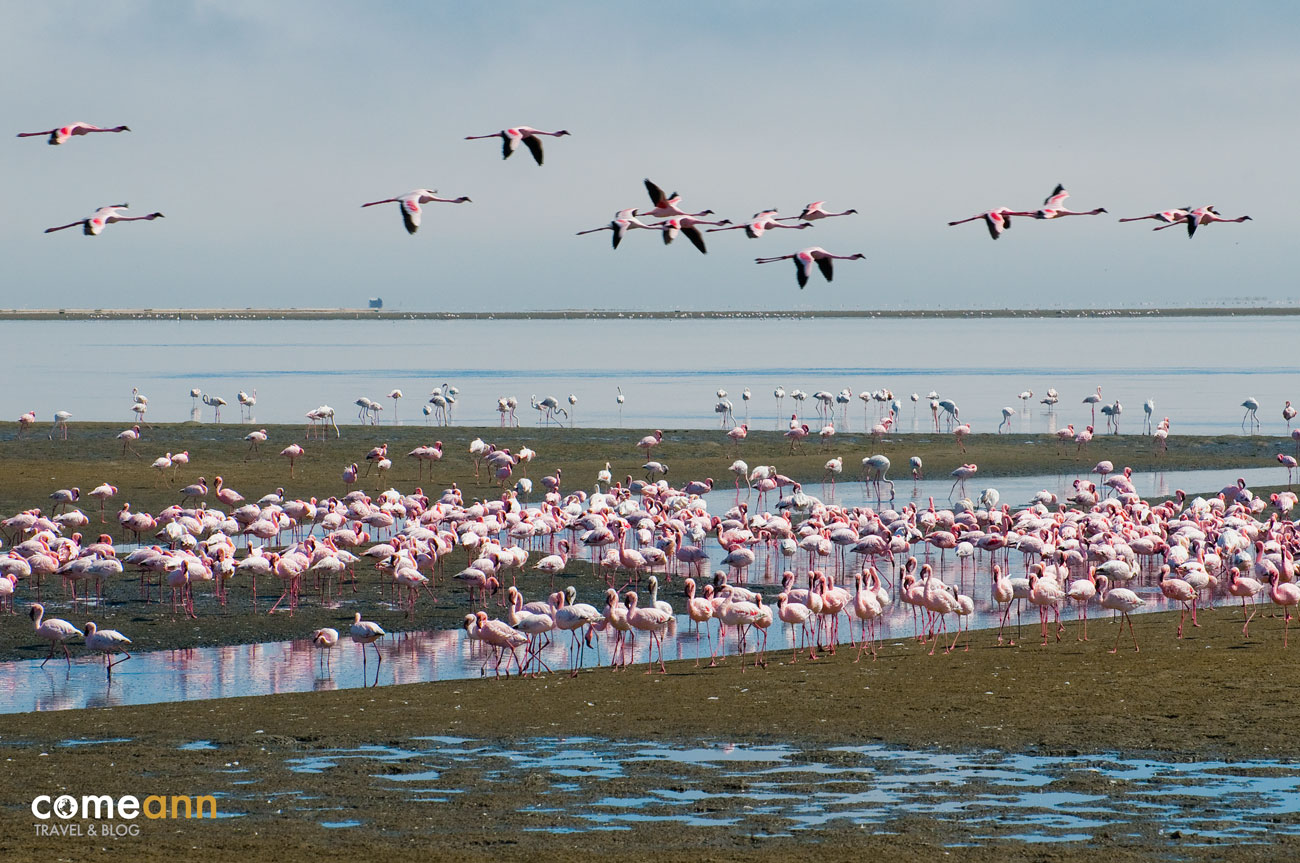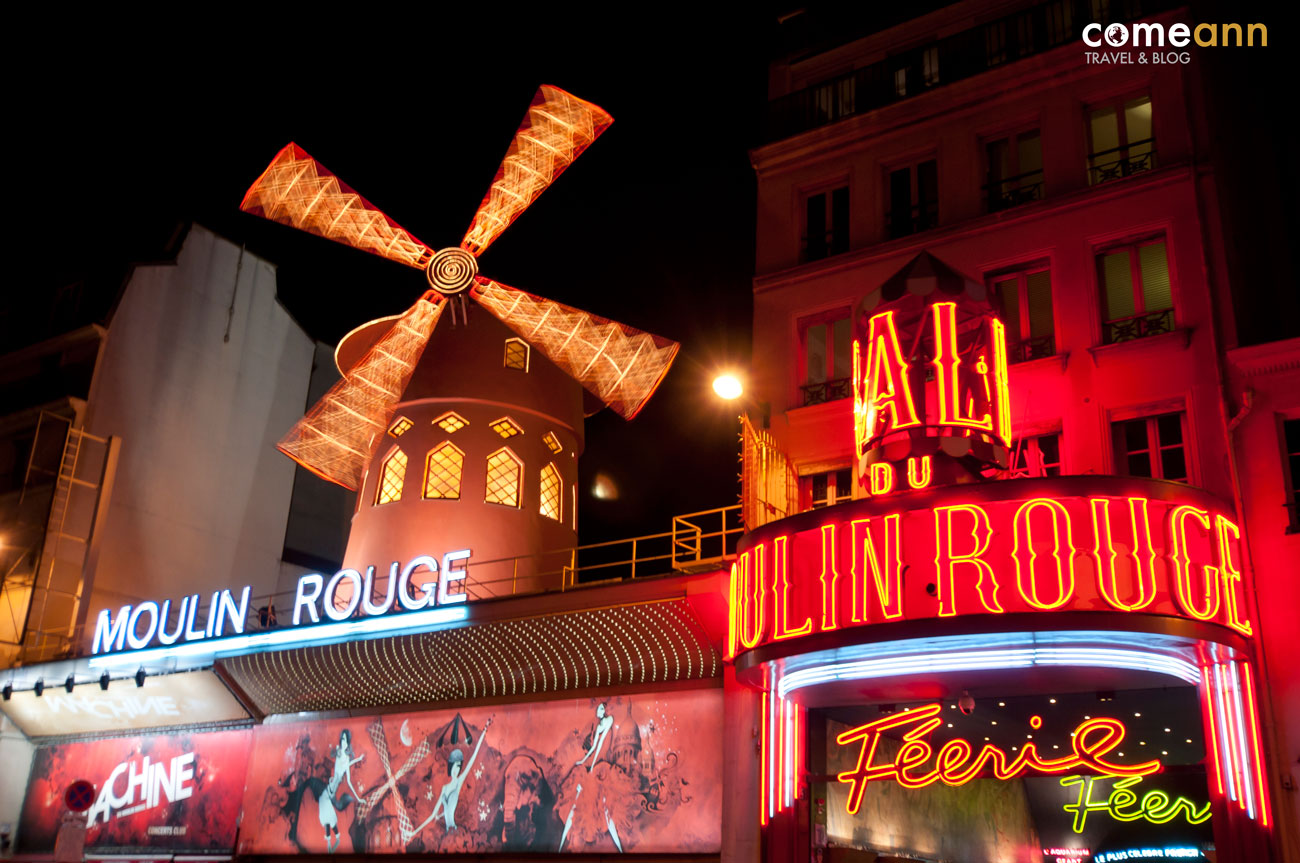Jakkolwiek to brzmi, dzień zaczęłam od… haremu. A konkretnie, od zespołu pałacowego Topkapi, wieloletniej siedziby i dumy sułtanów. Kolejki ogromne i mimo sylwestrowego dnia tłumy chętnych do zwiedzania!
Moja wycieczka po rezydencji niczym z „Baśni tysiąca i jednej nocy” rozpoczęła się po przekroczeniu Bramy Pozdrowień. Pałac Topkapi, wzniesiony w XV wieku, znajduje się w wyjątkowym miejscu, na tak zwanym Cyplu Pałacowym (Saray Burnu), gdzie Bosfor spotyka się z Morzem Marmara. Nawet w grudniu jest tu zielono i rosną palmy, a widok na cieśninę można podziwiać z majestatycznego tarasu i nieco niżej położonej restauracji. Obawiając się cenowego szoku, nie usiadłam tam jednak na kawę, zrobiłam jedynie kilka zdjęć.
Na pierwszy rzut poszedł harem (z arabskiego „zakazany”), czyli specjalnie wydzielona część pałacu przeznaczona dla matki, żon, nałożnic i dzieci sułtana. Podziwiałam przestronne dziedzińce, sale zabaw, łaźnie, sypialnie, jadalnię i bibliotekę. Wszystko zrobiło na mnie ogromne wrażenie, a w szczególności misterne dekoracje i wspaniała ceramika z Izniku.
Całe to piękno rodzi myśl, że harem to w istocie „złota klatka” – wszystkie żyjące tam kobiety były niewolnicami, a ich największym marzeniem było zostać faworytą sułtana i urodzić mu dziecko. Tylko wtedy, przy odrobinie szczęścia, nałożnica sułtana mogła zyskać status prawowitej żony i mieć jakikolwiek – choć i tak znikomy – wpływ na swoje życie. Taka świadomość niosła za sobą ciągłą rywalizację, a nie sielskie życie upływające w luksusie i przyjemnościach, jak może wynikać z niektórych baśni.
Najmocniejszą pozycję miała w haremie matka sułtana, a dalej żony, faworyty, nałożnice i służące. Całego kompleksu, składającego się z labiryntu korytarzy, strzegli eunuchowie, a jedynymi mężczyznami, którzy mieli prawo tam przebywać, byli bracia i synowie sułtana. Braci często więziono w specjalnym pomieszczeniu, zwanym „klatką”, by nie mogli konkurować z władcą o tron. Były to zdumiewające i przerażające czasy. Trudno to wszystko sobie nawet wyobrazić. A najbardziej zadziwia fakt, że ostatnie kobiety opuściły ten harem dopiero w 1909 roku…
Kolejne pomieszczenia, które zwiedziłam, to Skarbiec i tajemniczo brzmiące Sanktuarium Płaszcza Proroka. Obydwa miejsca były naprawdę niezwykłe, a eksponaty tam umieszczone spowodowały, że moje oczy prawie wyszły z orbit. W skarbcu można było bowiem podziwiać gigantyczny tron ze złota, zdobiony szlachetnymi kamieniami, złotą kołyskę, sztylety, spinki do turbanów sułtanów, tzw. egrety, czy 86-karatowy diament czy całą skrzynię pełną szmaragdów! To dopiero luksus – mieć w domu pod łóżkiem taką skrzynię drogocennych kamieni!
Co ciekawe, nie zauważyłam żadnej biżuterii przeznaczonej dla kobiet. Wytłumaczenie jest bardzo proste. Otóż kosztowności sułtanów po ich śmierci przechodziły w posiadanie skarbu państwa, a klejnoty kobiet stanowiły ich prywatną własność. Niestety, robienie zdjęć było zabronione, więc można jedynie próbować sobie wyobrazić te cuda lub… planować wyjazd do Stambułu.
W Sanktuarium Płaszcza Proroka zostały z kolei umieszczone najświętsze relikwie islamu, między innymi płaszcz, który nosił prorok Mahomet. Niestety, nie można go nawet zobaczyć, więc o robieniu zdjęć nie było mowy. Płaszcz znajduje się w złotym kufrze, w oddzielonym szybą pomieszczeniu. Inne zadziwiające eksponaty to włos z brody proroka, napisany przez niego list, odcisk stopy oraz szkatuła z kośćmi ręki św. Jana Chrzciciela.
O pałacu Topkapi można by napisać wiele, wiele więcej, ale ogólne wrażenie to niebywały przepych i bogactwo oraz przepiękne dekoracje i ceramika z Izniku. Można zamknąć oczy i wyobrazić sobie sułtana na złotym tronie, w lśniących szatach i wielkim turbanie na głowie, przyjmującego znakomite dary od przybyłych do niego gości.
W końcu nastał sylwestrowy wieczór. Nie planowałam zupełnie nic, wiec po prostu poszłyśmy na kolacje, powłóczyłyśmy się trochę po oświetlonych uliczkach i wróciłyśmy do hotelu. Tak naprawdę byłyśmy trochę zmęczone całodziennym zwiedzaniem, wiec nasz balkon z widokiem na morze Marmara i Bosfor, szczególnie w połączeniu z szampanem, wydawał idealnym miejscem na powitanie Nowego Roku. Ja zamierzałam zrobić piękne zdjęcia sztucznych ogni nad cieśniną, wiec rozstawiłam statyw i czekałam….
Czekałam, czekałam…, północ była coraz bliżej. O godzinie 23:45 niebo rozświetliło się kilkoma petardami. Zdecydowałam, że poczekam chwilę, bo przecież to dopiero rozgrzewka. O północy pojawiły się dwa fajerwerki. Nacisnęłam spust migawki i ustawiłam długi czas naświetlania, licząc na prawdziwą feerię barw i ogników na niebie.
Jakież ogromne było moje rozczarowanie, kiedy po kilku zaledwie wystrzałach zapadła cisza i ciemność. W Polsce fajerwerki mogłabym fotografować niemal do rana…
[print_gllr id=599]
•••
However weird it may sound, I started the day from the harem, more precisely, from Topkapi Palace, a place of long-term residence and sultans’ pride. The queues were truly long and despite the New Year’s Eve, there were crowds of tourists looking forward to visiting the palace.
My trip around the residence seemed like taken out from the tales of the Thousand and One Nights and began right after having crossed the Gate of Salutation.
The Topkapi Palace, bulit in XV century, is situated in a very special place, on so-called Palace’s Headline (Saray Burnu), where Bosporus meets the Marmara See. Even in December everything is green here, the palm trees are growing and you can admire the view on the strait from the majestic terrace and from the below located restaurant. Afraid of a price shock I didn’t sit there to have a coffee, only took a few photos.
I started the trip from the harem (in Arabic: “forbidden) which is a specially separated part of the palace assigned for the mother, wives, concubines and sultan’s children. I visited in turns spacious courtyards, playrooms, baths, bedrooms, dining room and library. All the places amazed me, especially sophisticated decorations and magnificent ceramics from Iznik. Yet soon crossed my mind a thought of a “golden cage” as all the women that used to live there were actually slaves and their ultimate dream was to become the sultan’s favourite and give birth to his child because only then, with a little bit of good luck, they could become their legitimate wife and have any (though still negligible) influence on their lives. Being aware of this, they kept on rivalling instead of enjoying an idyllic life in luxury and pleasures, as shown in fairy tales. The most important position in a harem was held by the sultan’s mother, then his wives, favourites, concubines and maidservants. The whole complex, consisting of a labyrinth of corridors, was guarded by eunuchs and the only men that could stay there were brothers and sons of the sultan. The brothers were often imprisoned in a special room called “the cage” so that they could not compete with the ruler for the throne. These were astounding and terrifying times. It’s even hard to imagine. And the most astonishing is the fact that the last women left the harem only in 1909…
The following rooms I visited were the Treasury and the mysterious-sounding Sanctuary of the Prophet’s Coat. Both places were indeed extraordinary and exhibits I saw truly amazed me. For in the Treasury you could admire a a giant throne made of gold decorated with precious stones, a golden cradle, daggers, sultans’ turban clips (so-called egrets), an 86-carat diamond or a case full of emeralds! What I found especially interesting was the fact that I didn’t notice any ladies’ jewellery. The explanation turned out to be very simple: sultans’ valuables after their death used to be passed into the possession of the State, whereas jewels that belonged to women were their private property. Unfortunately taking photos was prohibited so you can only try to imagine these miracles or… start planning a trip to Istanbul. In the Sanctuary of the Prophet’s Coat were in turn placed the most sacred Islamic relics, i.a. the coat that used to be worn by Prophet Muhammad. Unfortunately you couldn’t even see it, to say nothing about taking photos, as it is hidden in a golden case in a room separated by a glass wall. Among other astonishing exhibits you could find a hair from the Prophet’s beard and a letter written by him as well as a footprint and a coffer with bones of St. John the Baptist’s hand. You could write much more about the Topkapi Palace yet the overall impression was an incredible splendour and welfare as well as gorgeous decorations and ceramics from Iznik. You could close your eyes and imagine the Sultan on his golden throne wearing his shiny coat and enormous turban on his head, receiving splendid gifts from his guests.
Eventually came the New Year’s Eve night. I hadn’t planned absolutely noything so we simply went for a dinner, wandered about on illuminated streets and came back to the hotel. Honestly speaking we were a bit tired after the all-day visiting so our balcony with a view on Marmara Sea and Bosporus, especially in combination with champagne, seemed a perfect place to welcome the New Year. I intended to take beautiful pictures of fireworks exploding above the strait so I unfolded my tripod and waited. And waited, and waited… until it was almost midnight. At 23:45 a few firecrackers lit up the sky. I thought I’d wait a bit longer because in a moment there would be much more. At midnight exploded two other fireworks. I pressed the shutter and set a long time of exposure hoping for a blaze of colours on the sky. Just imagine my disappointment when after a short while the sky became completely calm and quiet, as if it was any other night. I was shocked! In Poland they must have been firing for a few hours or at least as long as they didn’t fall asleep.
[print_gllr id=599]


